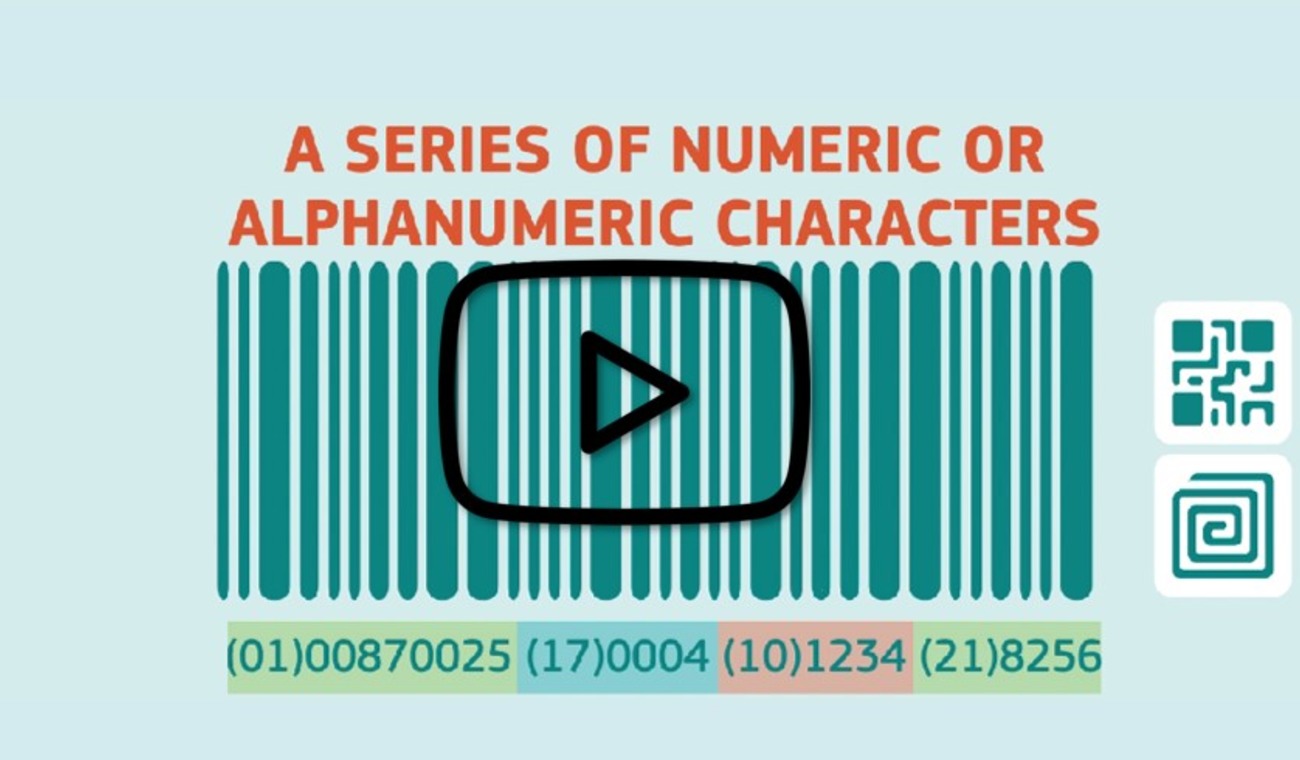Identifiers
The UDI is a series of numeric or alphanumeric characters that is created through a globally accepted device identification and coding standard. It allows the unambiguous identification of a specific medical device on the market. The UDI is comprised of the UDI-DI and UDI-PI. The unique identifier may include information on the lot or serial number and be able to be applied anywhere in the world.
 VIDEO: What is the UDI?
VIDEO: What is the UDI?
The production of a UDI comprises the following:
A UDI device identifier (UDI-DI) specific to a device, providing access to the information laid down in Part B of Annex VI in Regulation (EU) 2017/745 (MDR) and Regulation (EU) 2017/746 (IVDR).
A UDI production identifier (UDI-PI) that identifies the unit of device production and if applicable the packaged devices, as specified in Part C of Annex VI in Regulation (EU) 2017/745 (MDR) and Regulation (EU) 2017/746 (IVDR).
Device identifier (DI) specific information
A new UDI-DI shall be required whenever there is a change that could lead to misidentification of the device and/or ambiguity in its traceability.
In particular, a new UDI-DI shall be required in the case of any change of the following elements:
Name or trade name
Device version or model
Labelled as single use
Packaged sterile
Need for sterilisation before use
Quantity of devices provided in a package
Critical warnings or contra-indications
CMR/Endocrine disruptors
Note
A UDI-DI shall be associated with one, and only one, Basic UDI-DI.
Additional information on this aspect is available at MDCG 2018-1 v3 Guidance on BASIC UDI-DI and changes to UDI-DI guidance document.
 VIDEO: UDI assignment and updates
VIDEO: UDI assignment and updates
Secondary DI
The Secondary DI is an optional field in the DI record, designed to accommodate a DI from an issuing entity other than the Primary DI entity. For example, if your company has previously used GS1 GTIN codes for other purposes but decided to use HIBCC as a Primary DI, you should associate the GS1 GTIN code with the DI record in the Secondary DI field.
Production identifier (PI) specific information
If a lot number, serial number, software identification or expiry date appears on the label, it shall be part of the UDI-PI. If there is also a manufacturing date on the label, it does not need to be included in the UDI-PI. If there is only a manufacturing date on the label, this shall be used as the UDI-PI.
The different types of UDI-PIs include serial number, lot number, software identification and manufacturing date and/or expiry date. The UDI-PI characteristics such as the lot or serial number shall be defined by the manufacturer. However:
For active implantable devices, the UDI-PI shall include at least the serial number; for other implantable devices, the serial number or lot number.
A configurable device UDI-PI shall be assigned to each individual configurable device.
Note
No UDI-PI information can be included in the UDI database.
UDI-PI is not included in the regular registration process in EUDAMED (UDI – PI is only registered in the Vigilance module).
Basic UDI-DI
The Basic UDI-DI is the main access key for device-related information in the EUDAMED database and it is referenced in relevant documentation [e.g. certificates (including certificate of free sale), EU declaration of conformity, technical documentation and summary of safety and (clinical) performance)].
It is intended to identify and connect devices with the same intended purpose, risk class and essential design and manufacturing characteristics.
It is independent/separate from the packaging/labelling of the device and it does not appear on any trade item. Any Basic UDI-DI shall identify the devices (group) covered by that Basic UDI-DI in a unique manner.
MDCG 2018-1 v3 Guidance on BASIC UDI-DI and changes to UDI-DI guidance provides additional information on Basic UDI-DI.
The Basic-UDI is the high level grouping for devices with:
Same intended purpose
Same manufacturer
Same attributes
Essential characteristics
Master UDI-DI
The Master UDI-DI is an identifier of a group of highly individualised products/devices presenting specific similarities with respect to defined clinically relevant parameters.
The registration of a Master UDI-DI is required for the following Special Device types:
Standard soft contact lenses
Rigid Gas Permeable (RGP) Contact Lenses
Made-to-order soft contact lenses

